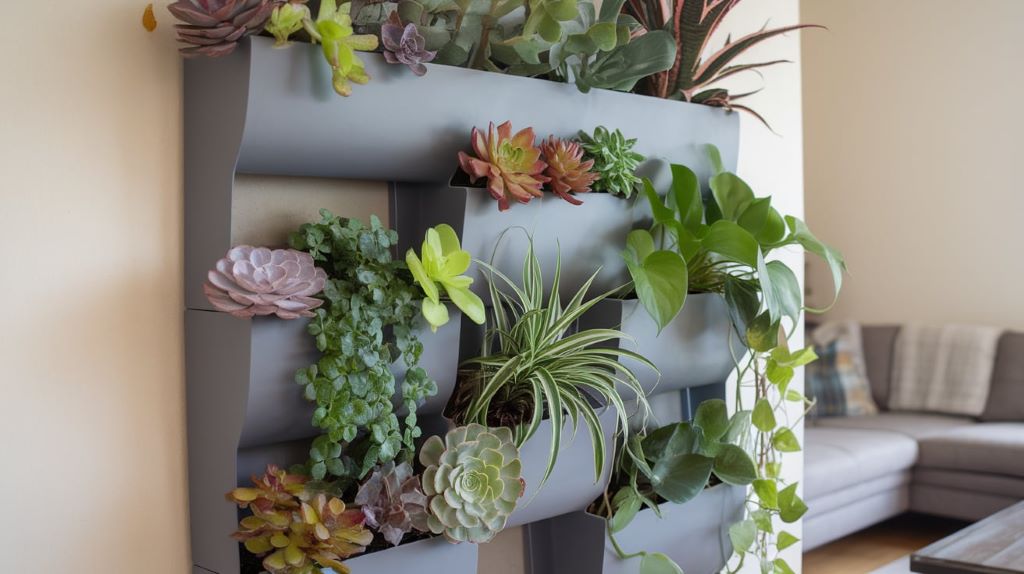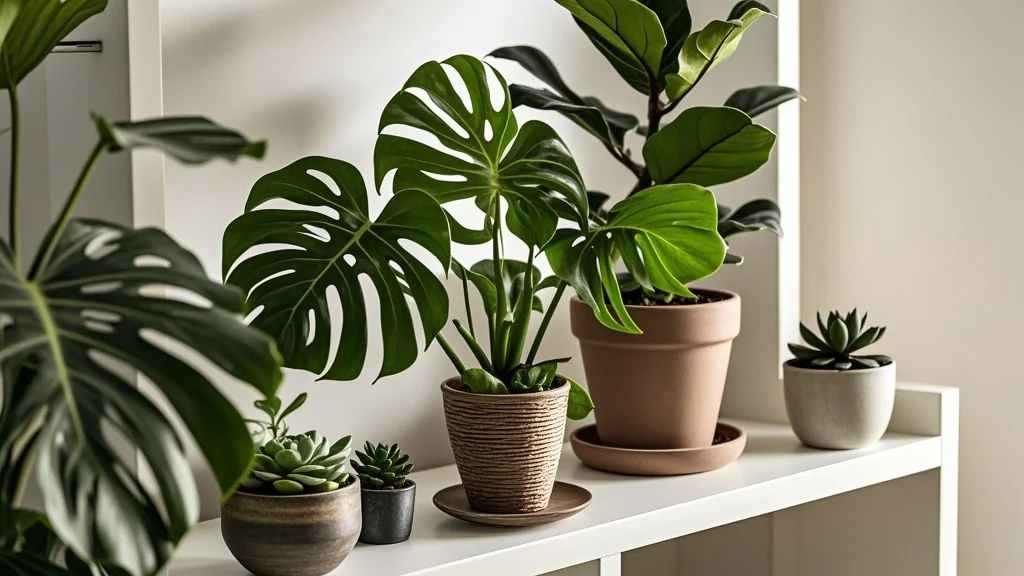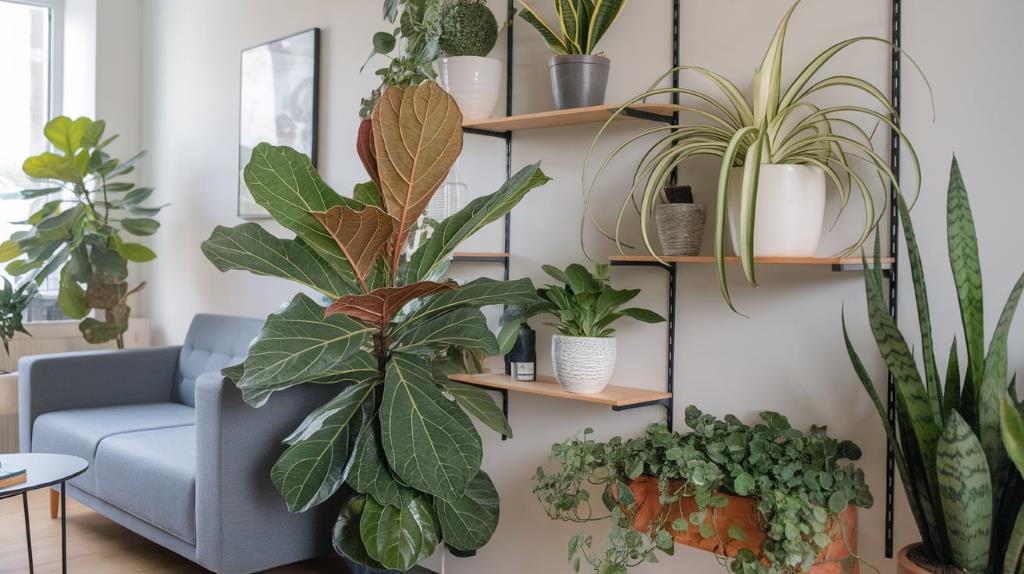Living in a small urban apartment doesn’t mean you have to give up on your dream of having a lush, green oasis. Vertical gardening offers a creative solution for plant enthusiasts with limited floor space. By growing plants upwards instead of outwards, you can transform bare walls into vibrant, living tapestries. This guide will explore various vertical gardening techniques, plant selections, and maintenance tips to help you create a stunning indoor wall garden in even the tiniest of spaces.
Contents
Benefits of Vertical Gardening
Before diving into the how-to, let’s consider the advantages of vertical gardening:
- Space optimization: Utilize vertical space efficiently in small apartments
- Improved air quality: Plants naturally filter and purify indoor air
- Aesthetic appeal: Create a unique, eye-catching focal point in your home
- Noise reduction: Plant walls can help absorb sound in urban environments
- Stress relief: Tending to plants can be a relaxing and rewarding hobby
Choosing the Right Vertical Gardening System
There are several options for creating a vertical garden indoors:
1. Pocket Planters
Fabric pocket planters are an affordable and flexible option. These hanging organizers feature multiple pockets for individual plants and can be easily mounted on walls or doors.
Pros:
- Lightweight and easy to install
- Allows for easy plant rotation and replacement
- Available in various sizes and colors
Cons:
- Limited root space for each plant
- May require frequent watering
2. Modular Wall Planters
These systems consist of interlocking containers that can be arranged in different patterns on your wall.
Pros:
- Customizable layouts
- Easy to expand or rearrange
- Often include built-in irrigation systems
Cons:
- Can be more expensive than other options
- May require professional installation for larger setups
3. Floating Shelves
Simple floating shelves can be used to display a variety of potted plants vertically.
Pros:
- Versatile and easy to install
- Allows for a mix of plant sizes and types
- Can be used for other decor items as well
Cons:
- Limited to the weight capacity of the shelves
- Requires individual pots for each plant
4. Trellis or Wire Grid
A trellis or wire grid mounted on the wall provides support for climbing plants.
Pros:
- Ideal for vining plants
- Creates a natural, organic look
- Can be combined with other planting methods
Cons:
- Limited to specific types of plants
- May take time for plants to fill in the space
5. Living Wall Systems
Professional living wall systems offer a comprehensive solution for larger vertical gardens.
Pros:
- Integrated irrigation and drainage
- Can support a wide variety of plants
- Often include grow lights for optimal plant health
Cons:
- Expensive and may require professional installation
- Can be complex to maintain
Selecting Plants for Your Vertical Garden

When choosing plants for your indoor vertical garden, consider the following factors:
- Light conditions in your space
- Watering and care requirements
- Growth habits (trailing, upright, or bushy)
- Root system size
- Overall aesthetic and color palette
Here are some plant suggestions for different light conditions:
Low Light Plants
- Pothos (Epipremnum aureum)
- Snake Plant (Sansevieria trifasciata)
- ZZ Plant (Zamioculcas zamiifolia)
- Chinese Evergreen (Aglaonema)
- Philodendron
Medium Light Plants
- Spider Plant (Chlorophytum comosum)
- Peperomia varieties
- Dracaena varieties
- English Ivy (Hedera helix)
- Ferns (Boston, Bird’s Nest, Maidenhair)
High Light Plants
- Succulents (Echeveria, Sedum, Crassula)
- String of Pearls (Senecio rowleyanus)
- Burro’s Tail (Sedum morganianum)
- Air Plants (Tillandsia)
- Herbs (Basil, Mint, Thyme)
Setting Up Your Vertical Garden
Follow these steps to create your indoor wall garden:
- Choose your location: Select a wall that can support the weight of your chosen system and plants. Ensure it receives appropriate light for your chosen plants.
- Install your vertical gardening system: Follow the manufacturer’s instructions for your chosen system. Ensure it’s securely fastened to the wall.
- Prepare your potting mix: Use a high-quality, well-draining potting mix suitable for indoor plants. For succulents and cacti, use a specially formulated cactus mix.
- Plant selection and arrangement: Plan your plant layout before planting. Consider color, texture, and growth habits to create an appealing composition.
- Planting: Carefully remove plants from their nursery pots and place them in your vertical garden system. Add additional potting mix as needed, ensuring roots are well-covered.
- Watering: Give your newly planted vertical garden a thorough initial watering. Allow excess water to drain completely.
- Add finishing touches: Consider adding decorative elements like small figurines, crystals, or fairy lights to enhance the overall aesthetic.
Maintenance and Care
Proper care is essential for a thriving vertical garden:
Watering
Watering frequency will depend on your plants, the type of system you’re using, and environmental factors. Generally:
- Check soil moisture regularly, watering when the top inch feels dry
- Use a spray bottle for delicate plants or air plants
- For larger systems, consider installing a drip irrigation system
Fertilizing
- Feed your plants with a balanced, water-soluble fertilizer every 4-6 weeks during the growing season
- Reduce fertilization in winter when plant growth slows
- Use a diluted fertilizer solution to avoid burning roots in the limited soil of vertical gardens
Pruning and Grooming
- Regularly remove dead or yellowing leaves
- Trim trailing plants to maintain desired length and fullness
- Pinch back growing tips of herbs and bushy plants to encourage fuller growth
Pest Control
- Inspect plants regularly for signs of pests like spider mites, mealybugs, or scale
- Treat infestations promptly with neem oil or insecticidal soap
- Improve air circulation to discourage pest problems
Lighting
- Supplement natural light with grow lights if needed, especially in winter months
- Rotate plants periodically to ensure even growth if light is coming from one direction
Troubleshooting Common Issues
Even with proper care, you may encounter some challenges:
- Yellowing leaves: Often a sign of overwatering or poor drainage. Adjust your watering schedule and ensure proper drainage.
- Wilting plants: Could indicate underwatering or root issues. Check soil moisture and root health.
- Leggy growth: Usually caused by insufficient light. Move plants closer to light sources or supplement with grow lights.
- Pest infestations: Isolate affected plants and treat with appropriate methods. Prevention is key – regularly inspect and maintain plant health.
- Soil erosion: In pocket planters or open systems, soil may wash out during watering. Use a layer of moss or small stones on top of the soil to prevent erosion.
Creative Ideas for Vertical Garden Designs
- Living art: Create a plant arrangement that mimics a painting or abstract art piece.
- Herb garden: Grow a variety of culinary herbs for a functional and fragrant display.
- Succulent tapestry: Use a variety of colorful succulents to create intricate patterns.
- Air plant display: Mount air plants on a piece of driftwood or a wire frame for a minimalist look.
- Seasonal rotation: Change out plants seasonally to keep your vertical garden fresh and aligned with the time of year.
- Themed gardens: Create themed plant collections, such as a tropical paradise, desert oasis, or forest floor.
Conclusion

Vertical gardening is an innovative solution for bringing nature into small urban spaces. With the right system, plant selection, and care, you can create a stunning living wall that not only beautifies your home but also improves your quality of life. Remember that your vertical garden is a living, evolving entity – don’t be afraid to experiment, learn, and adjust as you go. Happy gardening!









